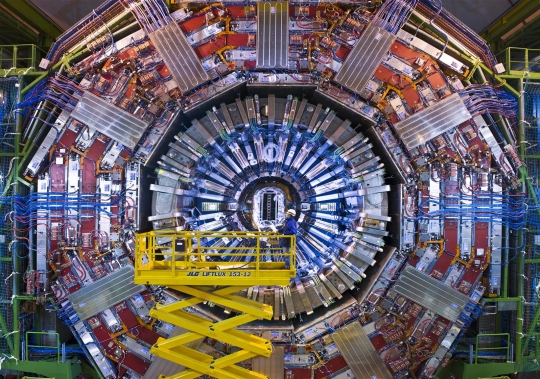CERN kicks off LHC's 2012 Higgs hunt

The European nuclear research agency CERN collided two high-power proton beams in the early hours of Thursday morning, marking the beginning of this year's Large Hadron Collider physics data collection.
The colliding beams were each of an intensity of 4 teraelectronvolts (TeV), and the resulting 8 TeV collision energy is the most powerful the particle accelerator has managed yet. In 2011's experiments, collisions went up to 7 TeV and, following the 20-month shut-down that will take place from November, CERN hopes to achieve LHC collision energy of 13 then 14 TeV.

CERN has begun 2012's experiments with the Large Hadron Collider. Image credit: Maximilien Brice/CERN
According to CERN, the seemingly minor increase in collision energy is enough to drastically improve researchers' chances of finding certain hypothetical particles, such as those predicted by supersymmetry, a theory that would account for the existence of dark matter.
The most high-profile aim of the LHC is to identify the theorised Higg's boson, referred to by some as the 'God particle'.
CERN said last December that it had found what may be traces of the Higg's boson. The big US rival to the European project, Fermilab, also said last month that its own findings seemed to back up those made in the LHC.
"Standard Model Higgs particles, if they exist, will also be produced more copiously at 8 TeV than at 7 TeV, but background processes that mimic the Higgs signal will also increase," CERN said on Thursday.
"That means that the full year's running will still be necessary to convert the tantalising hints seen in 2011 into a discovery, or to rule out the Standard Model Higgs particle altogether."